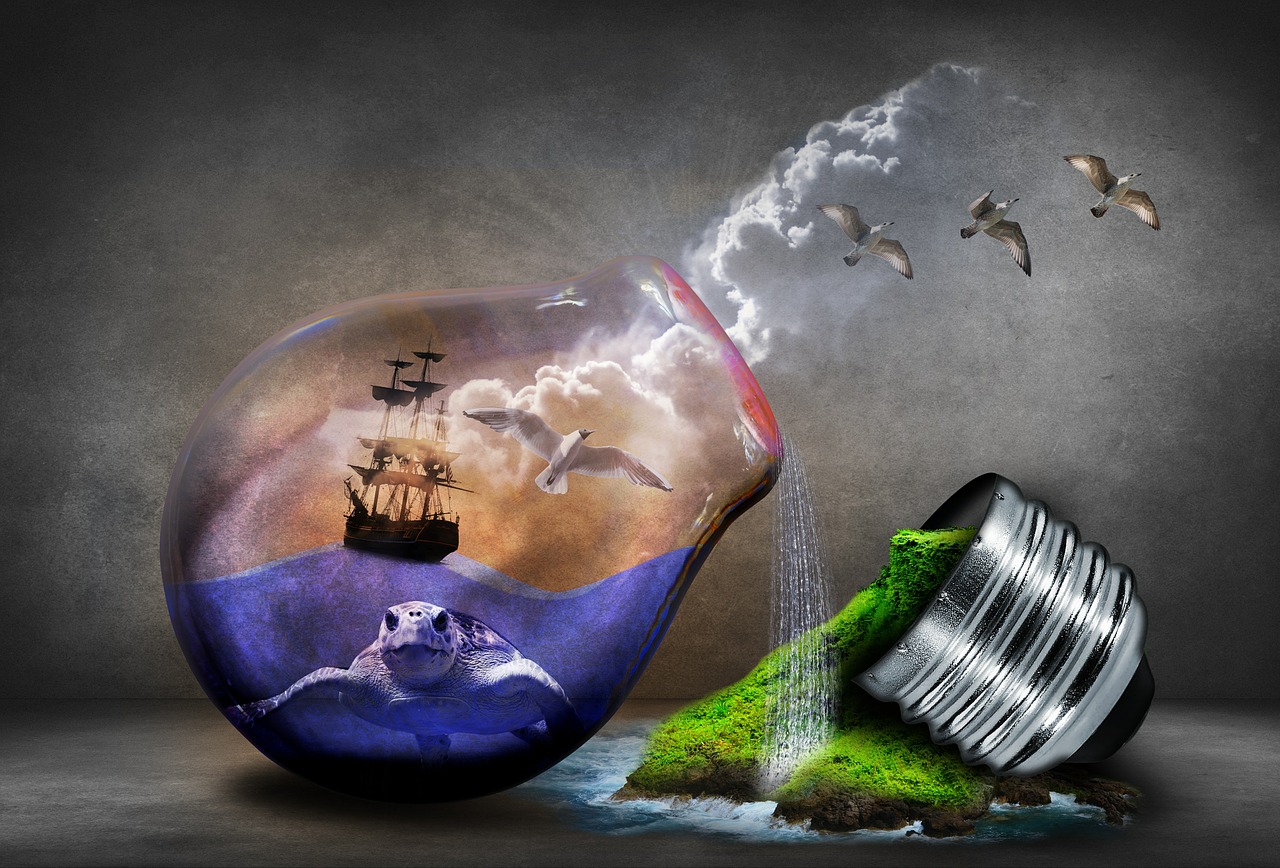Part academic, part consultant, of multicultural background, fascinated by Russia, the Arctic, Brazil, natural resources, demography, new spaces, Biotechnology, post-humanity and many many more issues.

Michael Akerib, independent higher education professional
Part academic, part consultant, of multicultural background, fascinated by Russia, the Arctic, Brazil, natural resources, demography, new spaces, Biotechnology, post-humanity and many many more issues.
A Halloween Story
‘You are confusing two concepts: answering the questions and formulating them correctly. Only the latter is required of an author.’ – Chekhov
A message for Halloween: let us not listen to the witches that tell us to walk into an age of scarcity and perhaps even into the next dying out by destroying the strategic natural resources our earth has been endowed with: air, food, water and energy sources which are intricately woven to form our environment from which we derive our basic needs.
Instead, let us resuscitate the voices of the fairies that were left drifting while we were only concerned with prices and that are telling us we need to avoid an impending disaster. They are telling us there is a problem and that a solution needs to be found as quickly as possible. So does the United Nations Environment Program which states in a recent report that if the right systems are implemented as of today, agriculture could feed 9 billion people AND become largely carbon neutral.
The alternative would satisfy the witches: the inability to produce sufficient food would lead to mass migrations, famines of an unprecedented scale and global social movements as prices skyrocket to unprecedented levels and the poor suffer even more.
The agro-industrial model, built over the last half-century, which sees the environment as a machine from which products must be extracted from unlimited resources with the help of technology; and the market as a global free-for-all arena, driven by price rather than quality – so as to reduce the percentage dedicated to food from our disposable income – is unable to sustainably feed a growing human population. We now consume more food than we produce, thus depleting stocks.
We need to rethink not only agricultural production but also the policies of retailers – who have driven the prices down to levels at which farmers can no longer concentrate on quality – and the expectations of consumers.
The very first step in any decision making process is becoming conscious of the problem and therefore of the need of a solution and this seems to have finally happened.
For a humanist, the alternative model to ‘us or the planet’ is one that sees humans as a component of a broad biological system – a complex dynamic model that links man and the earth’s resources.
Concrete steps to apply this model include stopping deforestation, in particular in tropical areas, as these prime biotopes are essential cogwheels in the water cycle and in reducing atmospheric carbon. Fertilizer addition to the soil needs to be reduced as it contaminates water tables and rivers. Methane release from animal manure, cattle in particular, also requires a substantial reduction.
Land usage (including not only pasture but also land devoted to grain farming) to produce beef is colossal. Convincing consumers to eat other types of meat or, on a more technological vein, producing meat in the lab, would contribute to preserving our environment.
Investments in agroecology would represent a big step forard in solving the food issue as well as allowing a satisfactory management of the three other resources. These investments can only be made by governments as major food companies are not interested in systems that offer a lower productivity per hectare. Investments must include storage facilities to enable farmers to store product rather than selling at harvest when prices are lowest. Investments must also be made in educating farmers to use these techniques and laws must also allow small farmers ownership of the land.
Indeed, agroecology, by relying less on external outputs, offers the advantage of breaking the reliance of agriculture on energy which is required for fertilizers, pesticides and to drive agricultural machinery. Pests are controlled by a variety of methods, such as insect repellent plants or animals such as fish in the case of paddy rice.
Prioritizing local production, as against global supply chains, also reduces the energy required to process food and transport it over long distances. This will not reduce the need for infrastructure to avoid produce spoilage which is a major source of waste in developing countries.
Introducing such methods would cease making the small farmer ‘the global epicenter of extreme poverty’ as he is described in the Millennium Project.
The reduction of food wastage should also become a matter of interest to retailers and consumers – statistics show that up to 30 to 50% of food products are thrown away. A pick up and recycling system in France, in particular to use this wastage as an energy source, has been shown to be profitable.
Water scarcity, already a fact in many countries, and variability in rainfall (and let us not forget that 80% of crop-land uses rainfall as its water source) becomes less of a problem with new forms of agriculture, which includes better rain water harvesting, particularly if new varietals are developed which require less water. Small infrastructure building is essential to enable access of water for the poor living in arid areas.
Yields, and therefore farmer income is increased.
New desalination technology, using substantially lower amounts of energy, will enable countries to regulate water availability in periods of low rainfall.
Our planet has a unique atmosphere that allows life and regulates the climate. An increase in the content of CO2, as is forecast from developing countries, would induce major changes in the earth’s ecological and geological system. Power generation is a major contributor to this state of affairs.
We discussed above the importance of tropical forests as carbon sinks. On the supply side, agriculture is a major contributor of climate change as manure releases substantial quantities of methane.
Coal usage in OECD countries should be gradually replaced by natural gas as CO2 emissions are heavily taxed. This is unlikely be the case in the rest of the world, and in China in particular.
Transport also has a major impact as it consumes sizable quantities of energy essentially in the form of gasoline. While the number of vehicles is expected to increase sharply, particularly in Asia, more efficient engines and alternative energy sources, particularly in cars developed and sold in America, Europe and Japan, should contribute to slow the expansion of oil consumption. ‘Smart’ vehicles and roads could reduce consumption by up to 40%.
As the world’s energy consumption increases, alternatives to oil will inevitably have to be used particularly as reduced availability of ‘black gold’ will drive prices upwards – whether peak oil is due to dwindling reserves or to the enormous amounts of capital required to locate and develop new deposits, oil production is set to fall. Reduced energy consumption would contribute to cleaner air by reducing the amount of pollutants released.
Technology will be a major factor determining the choice of the substitute, whether it is by cleaning coal, developing advanced materials for solar energy or inventing groundbreaking technologies. Developing countries may well have considerable difficulties to access these new sources and remain contributors to atmospheric pollution and global warming.
Greenhouse gas emissions could also be reduced if meat was grown in the laboratory as experiments under way appear to make it a clear possibility.
For such programs to become reality, retailers must lend a hand by accepting products with a greater variability. Standardization is difficult, if not impossible, to achieve with sustainable agriculture.
Higher prices of oil would undoubtedly assist in making this change in the agricultural paradigm. Such price increases could be a result of conflicts in producing countries – such as has recently been the case in Libya – or of the ability of China and the US to each secure captive production sources leading other buyers to pay premium prices.
Major price increases in oil would lead once more to the transfer of wealth from consumers to producers, with the poorer countries, particularly in Africa, suffering most. Turbulence in the currency market, particularly a weak US dollar, has negative long-term repercussions on oil availability and therefore leads to higher prices. A concerted action by Central Bankers would help stabilize currencies – perhaps with the introduction of a new global currency or the return to an indexation on gold.
The doorbell has just rung – children from the neighborhood were treat or tricking me. Having run out of sweets I offered them a ten dollar greenback which they turned down. Just like they turned down a 10 Euro bill. They asked for a gold coin, or a barrel of oil, but I did not have one. I am lucky to live in Switzerland and was able to give them a 10 franc note. They took it – no trick for me.
I hope the same applies to all those of us who live on this planet. Seven billion at the latest count.






